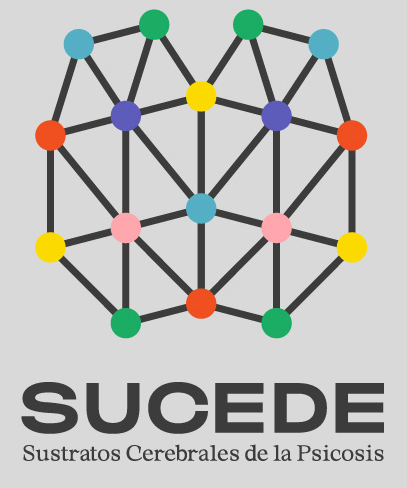Disconnection in Schizophrenia: The Key Lies in Brain Flexibility 🧠💡
Our research group, SUCEDE, has reviewed years of pioneering work using Electroencephalography (EEG) and Neuropsychology to unravel the biological basis of Schizophrenia (SZ).
The central finding is clear: schizophrenia appears to be a disorder of brain flexibility, manifested as a combination of basal hyperactivity and a notable difficulty in adapting neural network activity to cognitive demands.
Key Findings: A Rigid and Hyperactive Brain Network
Using advanced EEG metrics, we have identified two robust neurophysiological characteristics in patients with schizophrenia:
Basal Hyperactivation and Disorganization
In the resting state (baseline), we observe cerebral hyperactivation and hypersynchrony, measured through Noise Power (NP) and Connectivity Strength (CS). This excessive activity is inversely correlated with cognitive deficit. Specifically, basal hypersynchrony (CSb) appears to be a unique biomarker for schizophrenia, differentiating it from Bipolar Disorder (BP).
Functional Hypomodulation (Lack of Flexibility)
When the brain is asked to perform a cognitive task (such as the P300), SZ patients show a robust and replicable deficit in the modulation or reorganization of their activity. The Spectral Entropy metric (SEm), which measures signal complexity, is significantly decreased, indicating a reduced capacity for cortical network reorganization in response to the task. This flexibility deficit, or functional hypomodulation, is strongly associated with generalized cognitive deficits, such as Verbal Memory.
Inhibitory Dysfunction as an Underlying Cause
Our findings suggest that this rigidity and excessive activity might be due to a deficit in GABAergic inhibition (an imbalance between excitation and inhibition). The use of Transcranial Magnetic Stimulation combined with EEG (TMS-EEG) supports this hypothesis, showing that the capacity for cortical information integration (measured with the Perturbational Complexity Index, PCI) is lower in schizophrenia.
The Future: From Heterogeneity to Biotypes
Our group’s results are crucial for overcoming the heterogeneity of schizophrenia, which often masks its mechanisms. We have demonstrated the validity of transdiagnostic biotypes based on the combination of cognitive and neurobiological deficits. The deficit cluster (C1) exhibits greater biological and functional deficits, which translates into poorer functioning in daily life (relapse, employment).
Where Are We Going? Seeking Causality
Future directions include integration with direct biochemical techniques (such as Magnetic Resonance Spectroscopy – MRS) to directly measure the GABA/Glutamate balance, and conducting longitudinal studies to validate the predictive value of these biotypes.
In essence, we are moving from describing the symptoms of schizophrenia to identifying the underlying brain mechanisms that will allow us to refine diagnosis and develop more targeted and personalized interventions.



